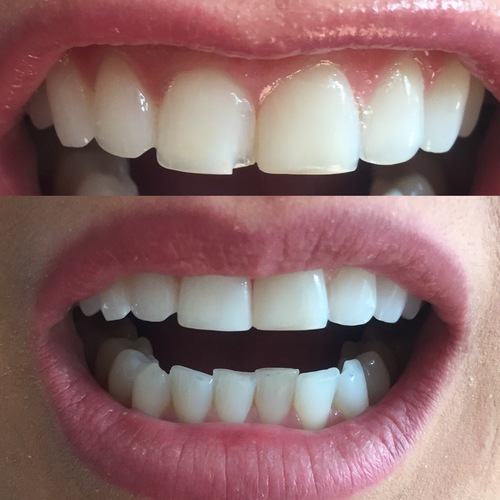Composite bonding
Composite bonding, also known as dental bonding or tooth bonding, is a cosmetic dental procedure used to improve the appearance of teeth. It involves the application of a tooth coloured composite resin material to repair and enhance the aesthetics of damaged, discoloured, misaligned, or otherwise imperfect teeth.
The process of composite bonding typically includes the following steps:
Consultation: The first step is to schedule a consultation with a dentist experienced in cosmetic dentistry. During this appointment, you will discuss your concerns and desired results.
Tooth Preparation: In most cases, little to no tooth preparation is required for composite bonding. Unlike porcelain veneers, which require the removal of a small amount of enamel, bonding involves minimal or no enamel removal. This makes it a conservative and less invasive option.
Shade Selection: The dentist will choose a composite resin material that matches the colour and shade of your natural teeth to ensure a seamless blend.
Bonding Process: The dentist will apply the composite resin material to the targeted tooth/teeth in layers. After each layer, a special light is used to harden or "cure" the material. The dentist will shape and sculpt the composite to achieve the desired appearance.
Polishing: Once the desired shape is achieved, the dentist will polish the bonded tooth to give it a smooth and natural-looking finish, matching the surrounding teeth.
Composite bonding is a versatile cosmetic dental procedure that can address various aesthetic concerns, including:
Repairing chipped or cracked teeth.
Filling gaps or spaces between teeth.
Covering discolouration or stains on teeth.
Reshaping uneven or misshapen teeth.
Lengthening small or worn-down teeth.
Protecting exposed tooth roots due to gum recession.
Improving the appearance of slightly crooked teeth (in some cases).
One of the advantages of composite bonding is that it is a relatively quick and cost-effective cosmetic dental treatment. However, it's essential to keep in mind that composite bonding may not be as durable as porcelain veneers, and the composite material can be prone to staining over time, especially if exposed to foods and drinks that can discolour teeth.
With proper care and maintenance, composite bonding can last for several years. Regular dental check-ups and good oral hygiene practices are essential to prolong the lifespan of the bonding and to maintain overall oral health. If necessary, the bonding can be touched up or replaced as needed.

